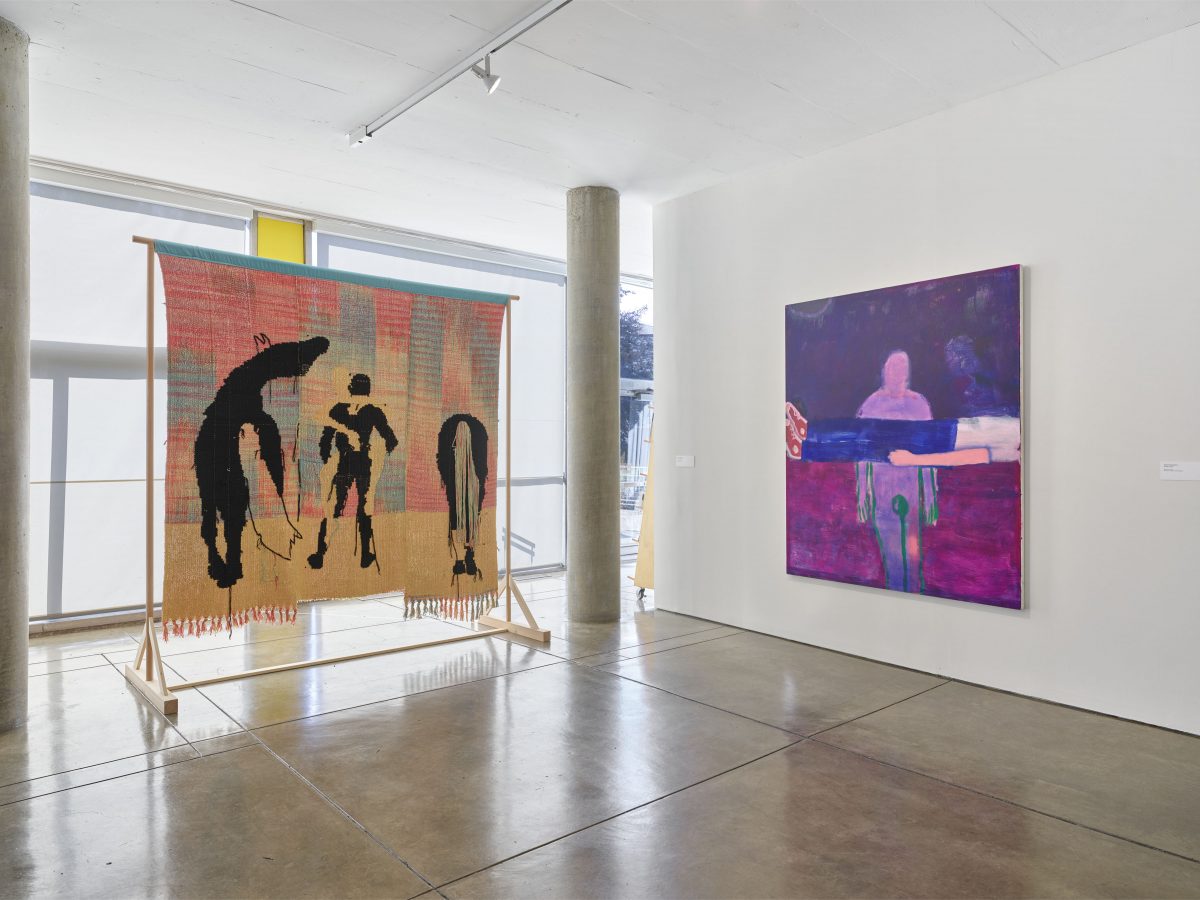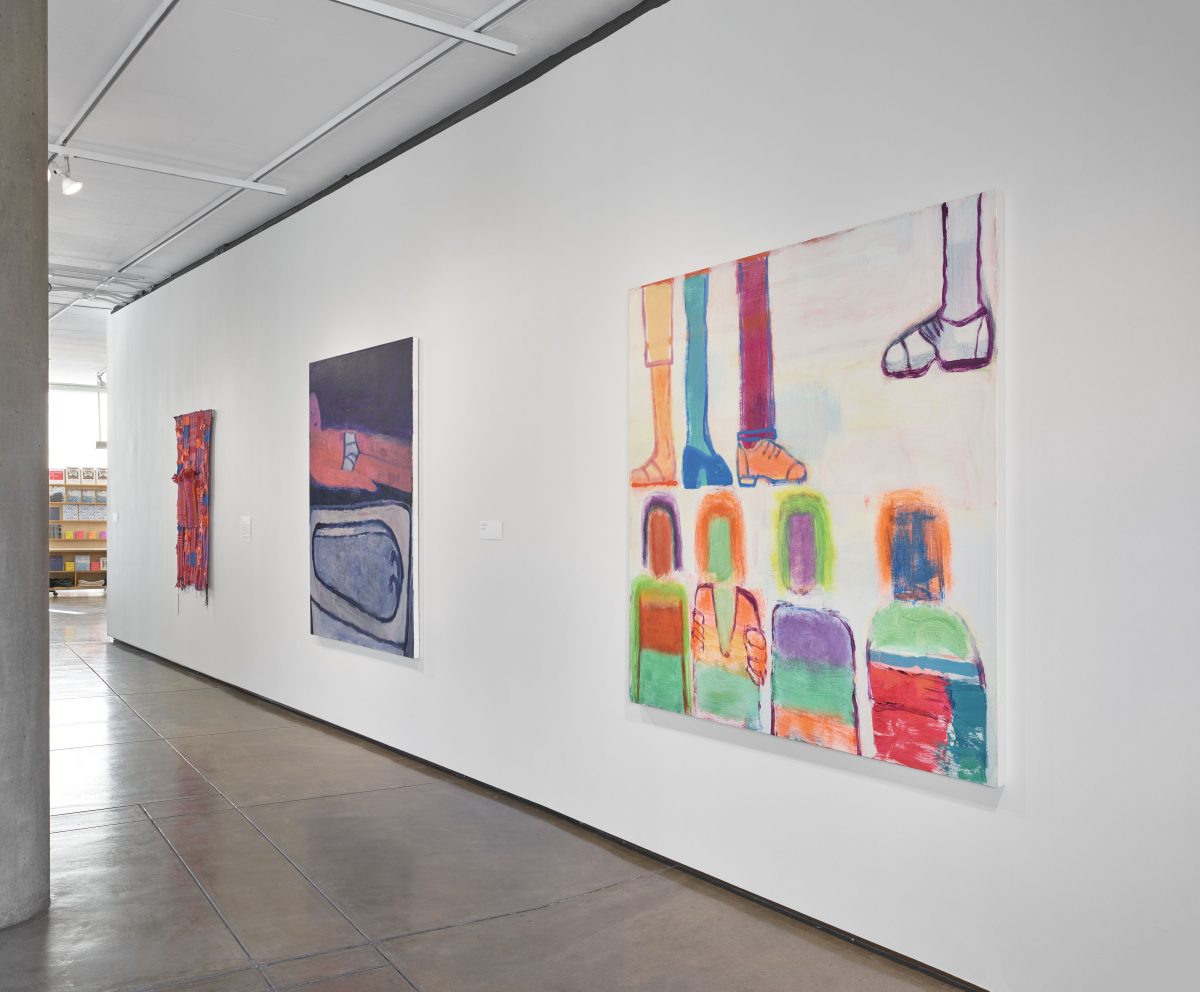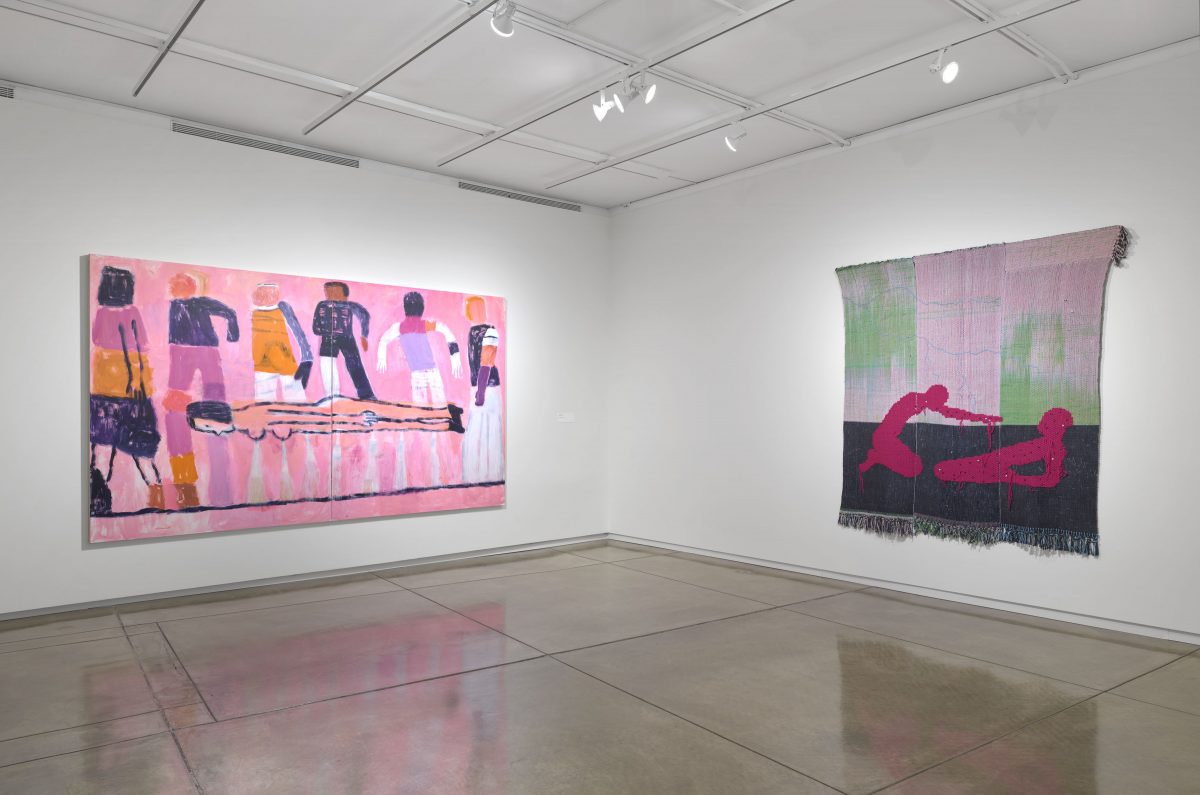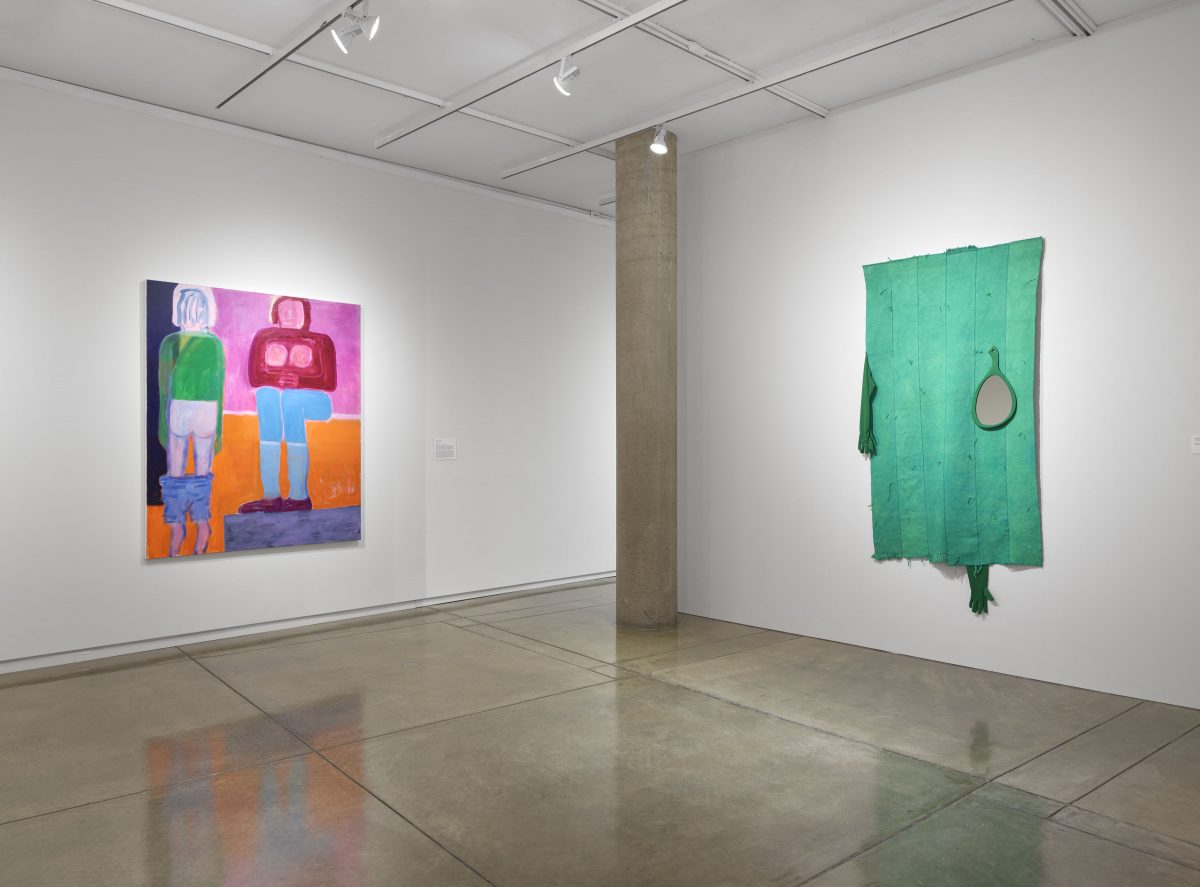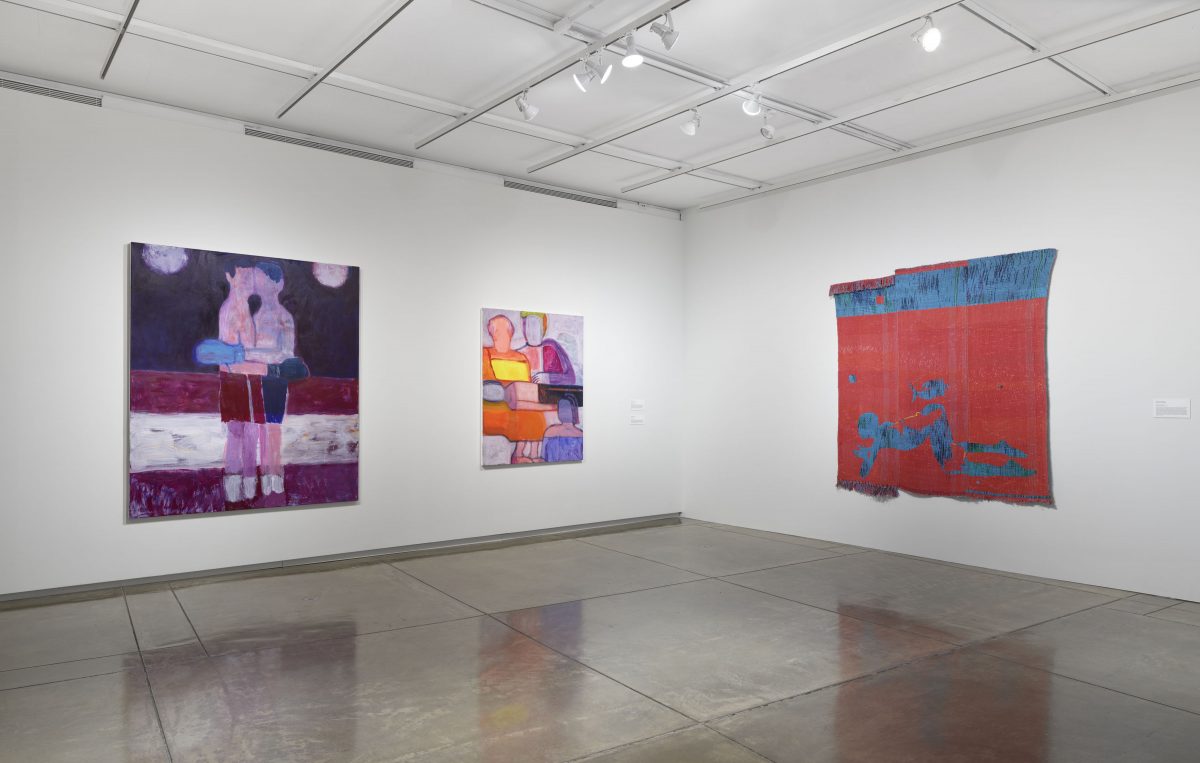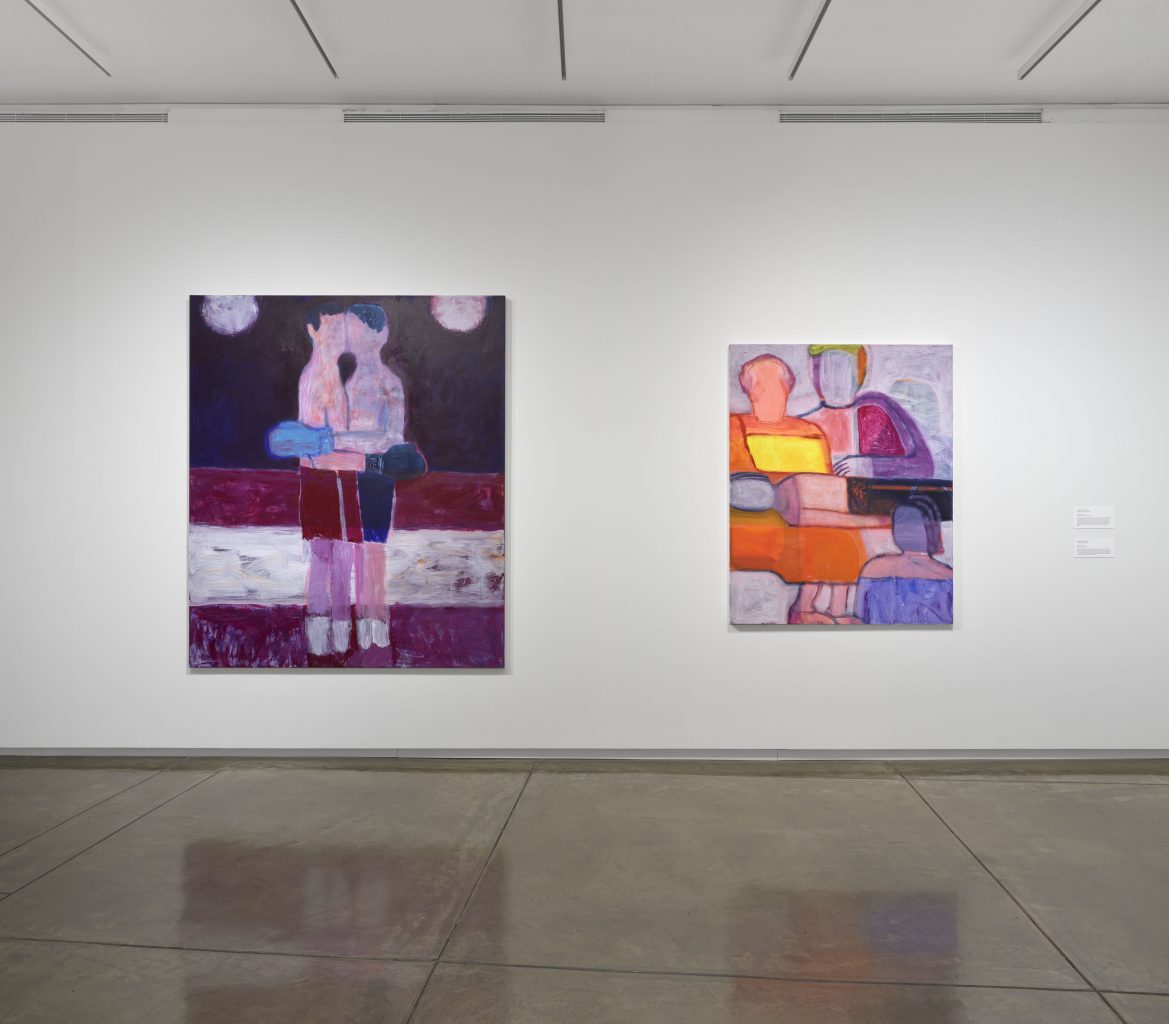
- This event has passed.
diedrick brackens and katherine bradford
The Carpenter Center for the Visual Arts is pleased to present a two-person exhibition of tapestries by Diedrick Brackens and paintings by Katherine Bradford. Brackens and Bradford’s works resonate within our moment of heightened emotion, isolation, and introspection in the midst of profound change to our social, economic, and public health realities. Both artists create dreamlike scenes that snap back and forth between the symbolic and the specific. Details speak to lived experiences as well as collective histories and memories. With parallel interests in materiality and the act of making, both artists use the specific physical and chromatic qualities of their chosen mediums—paint and yarn—to create ambiguous pictorial spaces that frame relationships between bodies. Their scenes seem to exist both outside and deeply embedded within this uncertain time, evoking cautions, questions, and desires about our bodies in relation to each other.
Diedrick Brackens makes figurative and abstract tapestries using techniques drawn from West African weaving, quilting traditions of the American South, and European tapestry-making. With an interest in allegory and symbolism, he combines autobiographical narrative with imagery that evokes broader histories of Black and queer identities. Silhouetted figures, plants, and animals move against optically charged passages of pattern and saturated color. Brackens uses traditional techniques to hand-dye cotton yarn, a material that can summon histories of enslavement. Each weaving renders an iconic, tactile, and tender presentation of experiences that feel at once personal and historical.
Katherine Bradford sets characters from her imagination against vast expanses like outer space and the ocean, or within closely cropped, abstract fields defined by her paint’s materiality and color. She creates her characters with an economy of painterly marks; they often lack facial features and are partially clothed. Nonetheless, they announce recognizable character traits in their gestures, body language, and physical relationships. Without the traditional markers of gender, her groups of people exist in collective fluidity, fitting together like indeterminant puzzle pieces. Against color fields that recall the luminous surfaces of midcentury abstraction, her figures play out scenes of adventure, solitude, collectivity, and intimacy.


